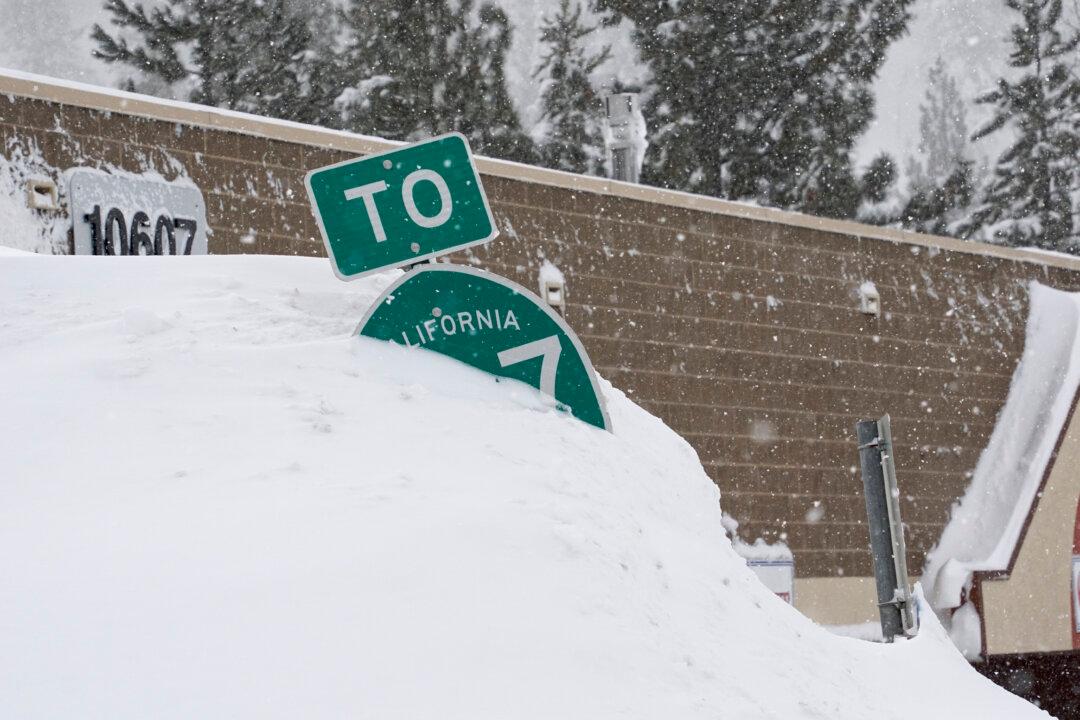TRUCKEE, Calif.—A major highway was closed and ski resorts were shut down Sunday as the effects of a powerful blizzard continued to cause problems across the Sierra Nevada, and forecasters warned that more heavy snow was on the way for Northern California.
Sections of Interstate 80 to the west and north of Lake Tahoe were made impassable by blowing snow piling up in lanes, with no estimate for reopening, the California Highway Patrol said.





